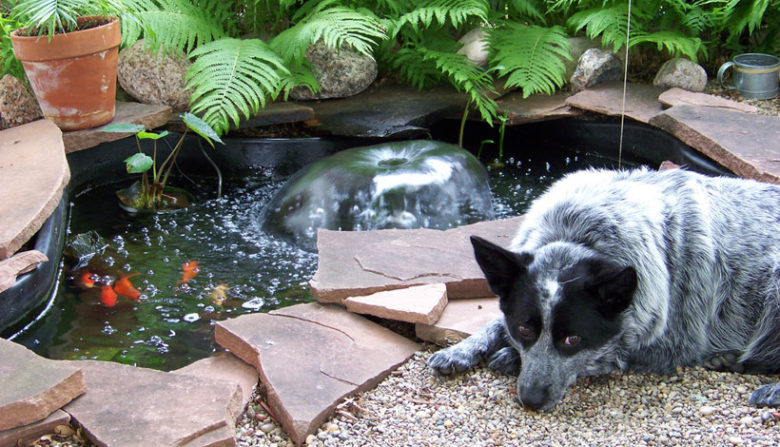As the vibrant colors of fall begin to fade in Maryland, it’s time for homeowners to turn their attention to preparing their outdoor spaces for the coming cold. Your backyard pond, a centerpiece of beauty and tranquility, requires special care to ensure it weathers the winter and emerges healthy and beautiful next spring. Properly winterizing your pond not only protects your investment in fish and plants but also makes for a much easier spring startup.
 For owners of luxury properties in Howard County and surrounding areas, maintaining the elegance of your water features is a key part of year-round property care. Follow these five essential steps to prepare your pond for the cold months ahead.
For owners of luxury properties in Howard County and surrounding areas, maintaining the elegance of your water features is a key part of year-round property care. Follow these five essential steps to prepare your pond for the cold months ahead.
Step 1: Clean Out Leaves and Debris
The first step in pond winterization is a thorough cleaning. As leaves fall, they accumulate in your pond, and if left to decay, they will release harmful gases and add excess nutrients to the water. This can lead to algae blooms and poor water quality in the spring.
- Use Protective Netting: Before the leaves start to fall, stretch protective netting across your pond’s surface. Once the surrounding trees are bare, simply roll up the netting to easily remove all the collected leaves at once.
- Manual Skimming: If you don’t use netting, use a long-handled skimmer net to regularly remove leaves and debris. Be sure to scoop along the bottom to remove any sunken sludge.
Step 2: Trim and Manage Aquatic Plants
Just like the trees, your aquatic plants will begin to go dormant. Dying foliage should be trimmed back to prevent it from decaying in the water.
- Hardy Water Lilies: Once they have stopped blooming, cut back the dying foliage to a few inches above the base of the plant.
- Marginal Plants: Trim the foliage of plants around the edges of your pond down to just above the water level.
- Submerged Plants: Thin out any overgrown submerged plants to prevent an overabundance of decaying matter.
Step 3: Shut Down and Store Your Pump and Filtration System
In regions with freezing temperatures like Maryland, it’s generally best to shut down your pond pump to protect it from damage and ensure the safety of your fish.
- When to Act: Once the water temperature consistently stays around 40-50°F, it’s time to turn off waterfalls, fountains, and other water features.
- Disconnect and Clean: Disconnect your pump, filters, and any UV clarifiers. It’s a great time to clean them thoroughly before storing them indoors in a bucket of water to keep the seals from drying out.
Shutting down the pump allows the water to stratify into thermal layers, creating a warmer, stable zone at the bottom where fish can safely spend the winter.
Step 4: Protect Your Fish
As water temperatures drop, your fish’s metabolism slows down. Adjusting their diet is crucial for their health.
- Switch Their Diet: When water temperatures fall below 60°F, switch to a wheat-germ-based food that is easier for them to digest.
- Stop Feeding: Stop feeding your fish altogether once the water temperature is consistently in the upper 40s. They will have enough body fat to last through the winter, and undigested food can cause serious health problems. For more detailed information on fish care, you can consult resources like the University of Maryland Extension’s Home & Garden Information Center.
Step 5: Install a De-Icer and Protective Netting
Even in a dormant state, your pond needs to breathe. A hole in the ice is essential for allowing toxic gases to escape and oxygen to enter.
- Use a De-Icer: A floating pond de-icer is the most effective way to maintain a small opening in the ice. It’s a low-energy device that gently heats the water just enough to prevent a full freeze-over. Avoid using brute-force methods like breaking the ice, as the shockwaves can harm your fish.
- Re-use Your Net: The netting you used for leaves can now be repurposed to protect your sleepy, slow-moving fish from predators like herons or raccoons.
Taking these steps now will ensure your pond and its inhabitants remain safe and healthy through the winter. When spring arrives, you’ll be rewarded with a clean, balanced ecosystem ready to burst back to life.
For homeowners who prefer to leave this important task to the experts, our landscape maintenance programs cover all aspects of seasonal care. Contact Absolute Landscapes today for a consultation on winterizing your pond!
Frequently Asked Questions
Q: Do I have to shut down my pond pump in the winter in Maryland? A: In most cases, yes. For ponds with fish, shutting down the pump allows the water at the bottom to remain warmer and undisturbed, which is safer for them. Forgetting to do so can super-cool the water and be fatal to your fish. If your pond is purely a decorative water feature without fish, you might be able to keep it running with a de-icer, but it’s often best to shut it down to prevent ice dams and potential damage.
Q: How do I keep my fish safe if the pond freezes over? A: The most important thing is to maintain a hole in the ice for gas exchange. A floating pond de-icer is the safest and most effective tool for this. It prevents harmful gases from being trapped under the ice and allows oxygen to enter the water, which is essential for your fish to survive the winter.
Q: Can Absolute Landscapes help with my pond winterization? A: Absolutely! Our team of experts provides comprehensive pond and water feature maintenance, including full winterization services. We can handle everything from cleaning and trimming plants to properly shutting down and storing your equipment, ensuring your pond is perfectly prepared for winter.
